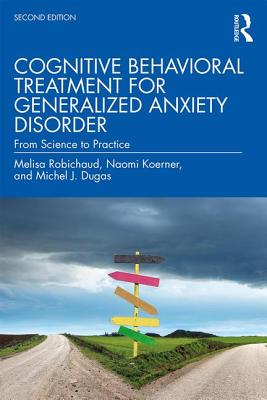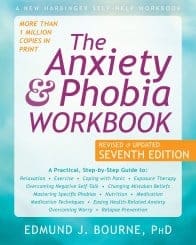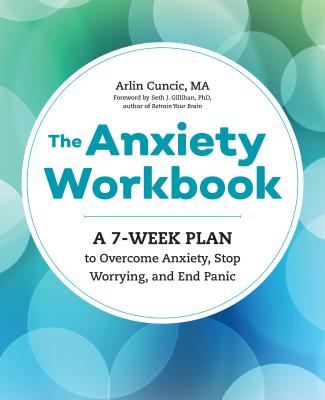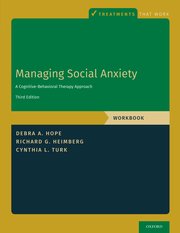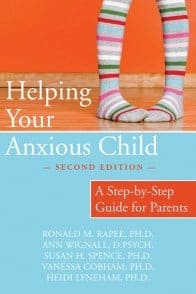Therapy
Cognitive Behavioral Therapy (CBT)
THC Editorial Team February 12, 2021

Contents
- Overview
- How Does Cognitive Behavioral Therapy (CBT) Work?
- How Effective Is Cognitive Behavioral Therapy (CBT)?
- What to Expect in Cognitive Behavioral Therapy (CBT)
What Is Cognitive Behavioral Therapy?
Cognitive behavioral therapy (CBT) is an evidence-based form of talk therapy, anchored in altering negative cognitive processes and behavioral patterns. CBT is a short-term, goal-oriented therapy administered by a psychotherapist, either face-to-face, or via teletherapy or online sessions. In addition to being considered the gold standard of psychotherapies by many researchers, CBT is appropriate for individuals of all ages.1
Aaron T. Beck, a psychiatrist, pioneered the cognitive therapy approach during his time at the University of Pennsylvania. While practicing psychoanalysis, Beck sought out to research depression. To his surprise, he found that depression appeared to involve negative interpretations of events or spontaneous negative thoughts, called automatic thoughts. When his patients practiced identifying and confronting these automatic thoughts, they improved both emotionally and behaviorally.2
Oftentimes, we are unable to change the circumstances or situations we find ourselves in; however, we are capable of changing the way we think about them and in turn how we feel about them. CBT posits that we view events through our own unique understanding, reasoning, and awareness. The premise of CBT is that recognizing these thought processes and why we may have them to begin with can allow us to control our feelings and our actions. There are three levels of thoughts and beliefs exist: automatic thoughts, assumptions, and core beliefs.3 A situation may evoke dysfunctional automatic thoughts, and in turn, our core beliefs and assumptions may guide us to interpret it and respond emotionally to it in dysfunctional ways. Clinicians who practice CBT consider this to be great news, though. Why? Sometimes, we may be unable to change situations that arise, but CBT gives us tools to change our thoughts, beliefs, feelings, and (re)actions.
How Does CBT Work?
CBT sessions usually take place once per week and are proven to be effective in about 20 sessions.4 However, individuals’ needs vary, and there is no set number of sessions necessary.
CBT is anchored in certain techniques and strategies to challenge a client’s thought processes, change their emotional responses, and achieve positive changes in behavior. Some strategies include the following:
1. Identifying and challenging cognitive distortions, or dysfunctional thoughts, such as the following:
- catastrophizing, or assuming that the worst-possible outcome will occur
- having an all-or-nothing mentality, or viewing situations or things as only good or only bad
- personalizing, or believing that anything negative individuals say or do is directly related to you
- overgeneralizing, or applying a negative experience to any similar ones
- labeling, or attaching negative labels to yourself or others
- emotional reasoning, or applying emotions to conclusions about certain situations
- making “should” or “must” statements, or believing there are things you “should do” and feeling guilty for failing to meet those expectations
- dichotomous thinking, or believing everything is black and white
- experiencing an obsessive intrusion of violent thoughts
- having repeated and intense doubts about your abilities
- having recurrent or distressing thoughts about death
- experiencing upsetting recollections of traumatic events
- experiencing repeated thoughts of humiliating events
2. Becoming aware of any existing problems or troubling events in your life.
- This may include medical conditions, symptoms of mental health issues, grief, divorce, abuse, trauma, and more.
3. Setting realistic, small, and achievable goals that are meaningful.
- This may include looking for a job, reconnecting with a network of friends, or finding a new hobby that will encourage positive thinking. CBT creates gradual progress by facilitating step-by-step behavioral modifications that can amount to an overall behavioral change.
4. Changing behavior by challenging thoughts and implementing new learned habits or behaviors.
- This may include facing fears instead of avoiding certain situations, creating mock situations in order to be better prepared in future interactions, and using techniques to calm yourself down if panicked.
5. Actively working on behaviors and thought processes outside of therapy.
- This ensures implementation of new learned behaviors. These efforts can be in the form of keeping journal entries of your days, using techniques to rationalize potentially irrational beliefs, or setting time for physical exercise or meditative practices.
Related Forms of Therapy
CBT acts as an umbrella term for certain modalities of psychotherapy.5 Some forms of psychotherapies that involve CBT include the following:
- Behavioral therapy (BT) is a goal-oriented therapy that posits that behaviors are learned and that unhealthy, destructive ones have the potential to be unlearned.
- Cognitive therapy (CT) focuses more on removing psychological distress and less on fixing negative behaviors. CT clinicians believe that changing the way individuals view situations can improve their well-being.
- Dialectical behavior therapy (DBT) focuses on applying mindful awareness to life and challenging patients to face and make peace with their truths or pains. It emphasizes changing behavioral patterns rather than talking through current struggles. DBT can be applied to personality disorders, suicidal symptoms, and other complex issues.
- Acceptance and commitment therapy (ACT), known as the “third generation” CBT, focuses on accepting your dysfunctional emotions and cognitive processes in order to become comfortable with the discomforts of life.
- Mindfulness-based cognitive therapy (MBCT) focuses on the formal integration of mindfulness into how you react to your own thoughts. It emphasizes greater awareness and constant refocusing of the way you judge your internal thoughts, with particular attention to the present moment.
- Rational emotive behavior therapy (REBT) focuses on challenging basic irrational assumptions that may guide an individual’s actions and illogical thought processes. It focuses on differentiating inappropriate, unhelpful negative emotions from helpful ones.
How Effective Is CBT?
Since the 1960s, more than 1,000 studies have proven the efficacy of CBT in treating various psychiatric disorders and psychological issues.6
CBT may help improve the following mental health disorders and problems:7,8
- anxiety and related disorders
- posttraumatic stress disorder (PTSD)
- generalized anxiety disorder (GAD)
- panic disorder
- specific phobias
- obsessive-compulsive disorder (OCD)
- social anxiety or social phobia
- major depressive disorder (MDD)
- bipolar disorder
- schizophrenia
- eating disorders
- substance use disorders
- sleep disorders
- sexual and relationship problems
- anger management
CBT has been proven effective in the following ways for these conditions and disorders:7,9
- Depression and dysthymia. CBT was shown to be more effective than no treatment and equally effective to other treatments, including medications, interpersonal therapy, and problem-solving therapy for depression and dysthymia.
- Anxiety disorders. Studies have very consistently and reliably demonstrated efficacy of CBT in the treatment of anxiety disorders.
- Schizophrenia. Studies have demonstrated that CBT is effective in reducing positive symptoms (i.e., delusions and/or hallucinations) and secondary symptoms (i.e., general functioning and mood) of schizophrenia. However, psychopharmacology is more effective for chronic symptoms and relapse prevention.
- Bipolar disorder. Research has shown that CBT is effective in preventing and delaying relapse of bipolar disorder. However, CBT is more effective as an adjunct to pharmacotherapy.
- Eating disorders. CBT has been proven to be an effective treatment for eating disorders, specifically for the symptoms and remission rates of bulimia nervosa.
- Substance use disorders. Studies have demonstrated that CBT helps reduce cannabis and nicotine dependence but is less effective for opioid and alcohol dependence.
- General stress. According to the research, CBT is effective in reducing general levels of stress.
In a recent study, a team of researchers reviewed 19 studies consisting of 1,384 patients with either type I or type II bipolar disorder. CBT was found to lower the relapse rate and improve depressive symptoms, mania severity, and psychosocial functioning. Improvements in depression and mania were greater if CBT treatment sessions were longer than 90 minutes.10
In a study conducted in the United Kingdom, a team of researchers worked with 50 young people aged 12 to 17 years old who were diagnosed with obsessive-compulsive disorder (OCD). The individuals were assigned to either individual CBT or parent-enhanced CBT. The results indicated that both forms of CBT significantly reduced OCD and anxiety symptoms in the participants, meaning CBT treatment was effective whether parent involvement was high or low. However, parent-enhanced CBT may be associated with greater reductions in anxiety symptoms. Changes in OCD symptoms were maintained during the posttreatment checkups.5
What to Expect in Cognitive Behavioral Therapy (CBT)
CBT is practiced by licensed mental health clinicians, including marriage and family therapists, social workers, professional counselors, psychologists, and psychiatrists. Marriage and family therapists, social workers, and professional counselors must obtain a master’s degree in psychology, while psychologists must obtain a doctoral degree. Psychiatrists, who are medical doctors, are the only mental health clinicians who are able to prescribe medications. No matter the clinician’s education, the most important aspect is finding a clinician who specializes in CBT, works well with you, and suits your needs.
Finding the right therapist may feel daunting, so the following approaches may be helpful:
- Ask a professional you already know and trust. You can ask your physician, dentist, counselor, or even lawyer of any therapists they may know. Many psychotherapists work in private practices, and a trusted professional in your life may be connected to that sort of business and could provide you with suggestions.
- Ask friends or family members if they know of any therapists. If you can trust they won’t attempt to pry and are able to simply provide you with names or resources, asking them could be a good option.
- Look into services provided at your university, school, or work. Over the past several years, universities have made greater investments in mental health services. University counseling centers have qualified clinicians and may also be able to share external resources with you. Additionally, many companies have an Employee Assistance Program (EAP), which provides emotional support. The human resource department should provide you with internal or external resources to find a clinician.
- Obtain a list of providers through your insurance company. If you visit your insurance company’s website, there will be a section that addresses finding a physician or provider. You will have to specify that you are looking for a mental health provider, and you should receive a list of those located near you.
- Search the internet. If you google “therapist” plus your zip code, the search engine should provide you with many websites that suggest therapists who are in your area. Once you find a few clinicians, you can call them and ask whether they take your insurance and whether they are taking new patients.
CBT is a great approach to managing mental health issues and/or day-to-day general stress. Engaging with CBT can help individuals regain control over their thoughts and enact behavioral change.
Your clinician will have your best intentions in mind and guarantee you a private outlet for your emotions with an unbiased perspective. If you or anyone you know struggles with mental health issues, there is an entire field of professionals who wish to help in every capacity they can.










